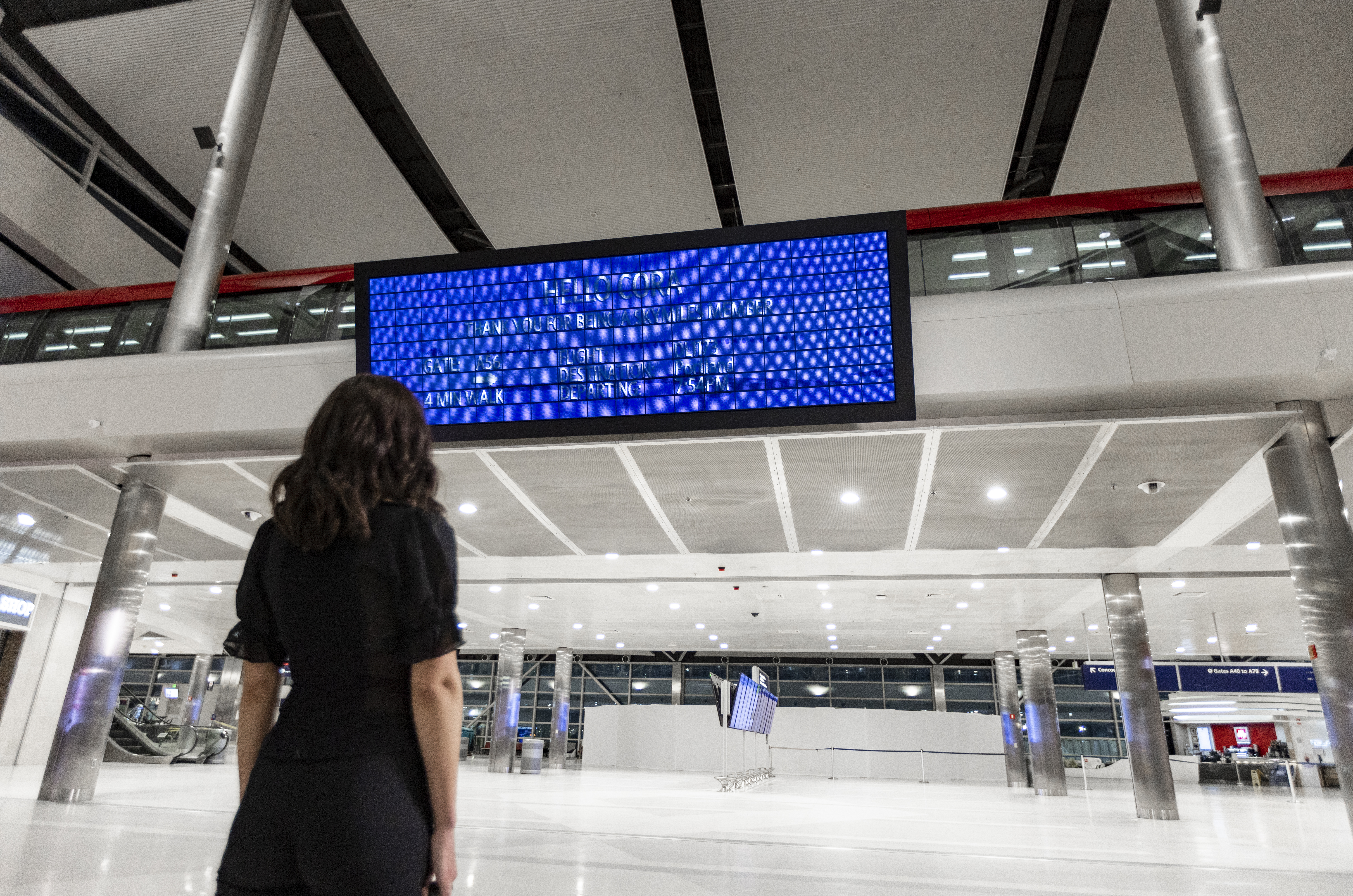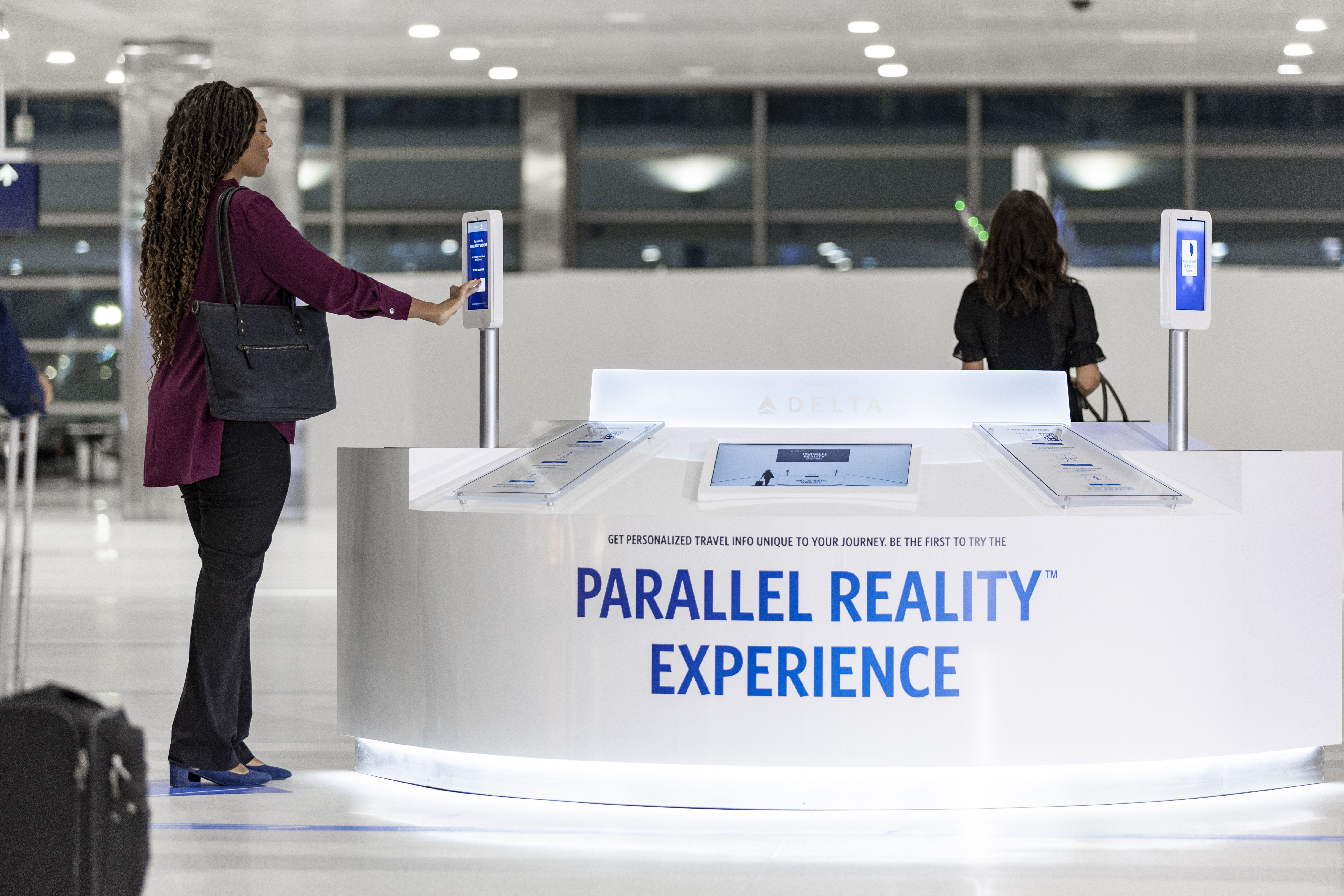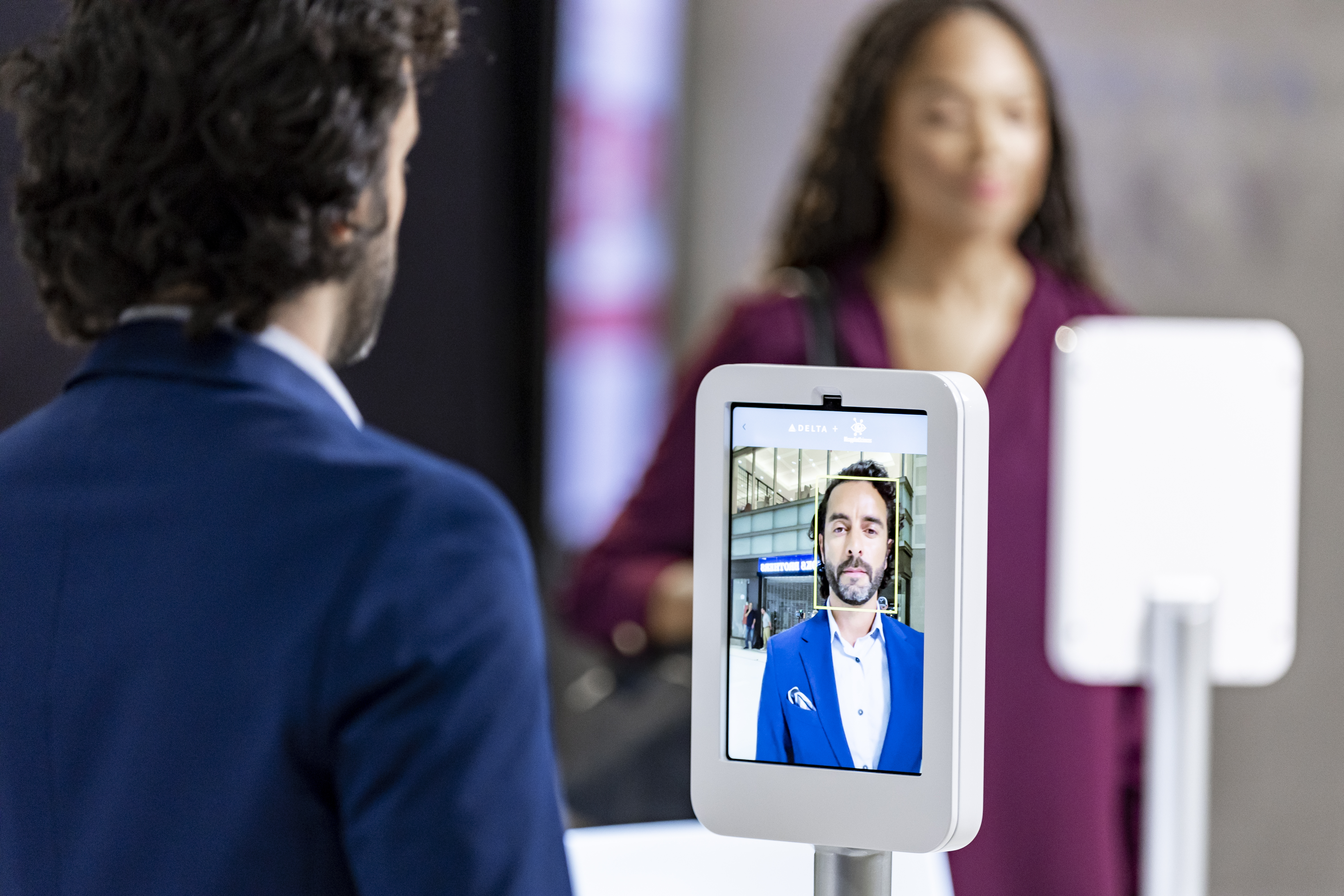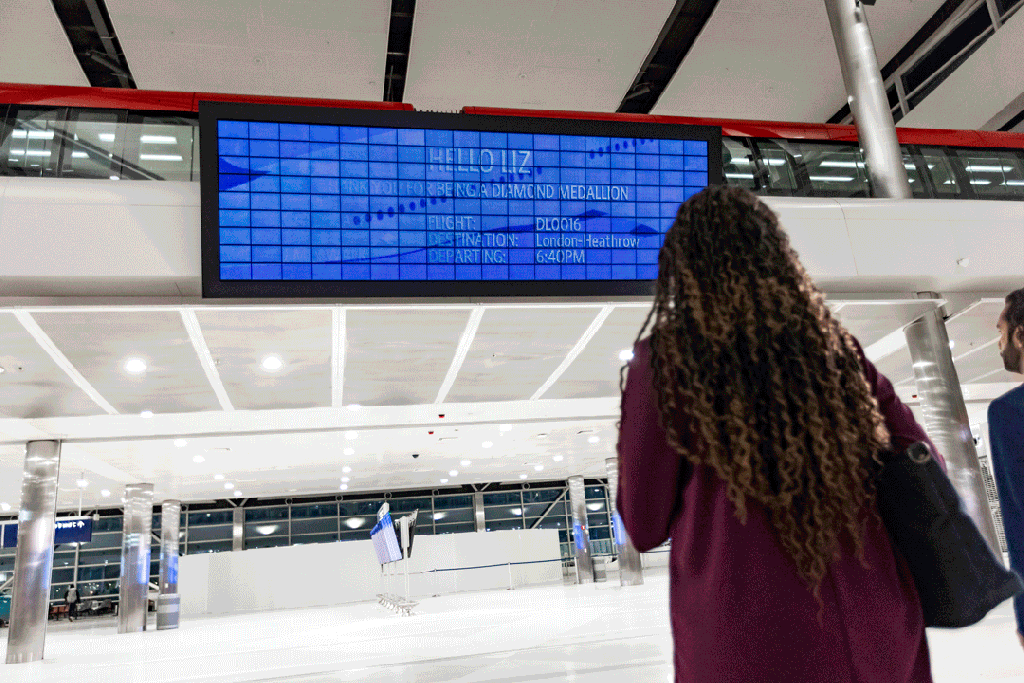Flight information boards, especially the old electromechanical ones with their clacking letters, are often an iconic part of an airport. But just like flying today is quite different from 30 years ago, most airports have now moved to large LCD screens instead. Despite the fact that you could easily find all of this information on your phone, travelers regularly congregate around these signs to get up-to-date information about their flights.
At CES 2020, Delta Air Lines and Misapplied Sciences first showed off what the future of these displays could look like, with a large board that shows up to 100 passengers personalized information about their flights in parallel. Today, the company is launching this experience in its Detroit hub and any Delta flyer who wants to give it a try can now do so, marking the first time one of these boards is being used in a public venue.

Back in 2020, Delta and Misapplied Sciences said they would bring the first Parallel Reality experience, as Misapplied calls it, to Detroit by the middle of 2020. Those were the optimistic days before the pandemic, so it’s maybe no surprise that the two companies decided to hold off on installing it until now. In June 2020, after all, fewer than 300,000 people got on a plane in Detroit.
The Parallel Reality displays work because every pixel in the display can simultaneously project millions of light rays in different directions. As travelers scan their boarding passes to opt in to the experience (with the potential for mobile tracking and similar technologies following later), the system’s sensors will track them, even as they walk around the display, and show the right information for their eyes only. It sounds a bit like magic, but I remember trying it out during CES 2020 and it does really work. It’s not a 4K cinematic experience, but the screen is perfectly legible and with two extra years of development time, Misapplied Sciences was able to improve the display, too.

The new display is six and a half feet tall and 21 and a half feet wide, Misapplied CEO Albert Ng told me. “The point of Parallel Reality is that you can create an entire venue that is customized just for you,” he explained. “The vision is of course, as you walk through from curb to gate, throughout the airport, you’ll be able to have the entire airport just handhold you and provide a seamless, personalized experience for you and we’d like to show off kind of the largest scale display for that.”
To show that Delta is all in on this, the company removed a large legacy sign in the airport that had been in use for more than 20 years (showing tram information).
Forbes noted that by scanning a boarding pass, users opt into using this new system, but now that Delta also has its Digital ID facial recognition system, which it launched last fall, the plan is to use personal devices for users to opt in, too.
Greg Forbes, Delta’s managing director of Airport Experience, noted that it was important for his team to find a useful application for this system. “We have these flight information boards that have been a feature of airports for decades and decades,” he said. “And it’s funny, because, going from the kind of mechanical flipping ones over to digital — that’s really the big innovation that has happened since. And you have all these challenges where there are more and more flights, so you add more and more screens, and that just makes it even harder for customers to use. You see big crowds of people standing around, trying to pick out their flights as it’s moving.”

In the ideal world, these signs would just follow you around in the airport and keep pointing you to your gate or the airline lounge. But for now, Delta is going to test this single board in Detroit, and even though Forbes noted that the company is thinking about how to use it in its Sky Club lounges, for example, it’s not planning to simply bring the same experience to another one of its hubs. Instead, he believes it’ll be more interesting for now to experiment with other use cases. The two companies are also looking at how to improve the current board with features like multi-language support.
As for Misapplied Sciences, it’s worth noting that while Ng noted the close collaboration between his company and Delta, there is no exclusivity here. “Parallel Reality is a widely applicable technology to any out-of-home venue where many people are looking for different things, have different preferences and would benefit from a different curated personalized experience,” Ng said. “The airport is just the start. We’re very excited to introduce this into other venues, like retail venues, stadiums or other entertainment venues, hospitality venues — anywhere out of home where many people can be experiencing personalized experiences in a shared public environment.”
He wasn’t quite ready to announce any future deployment plans just yet, though.
If you’re traveling through Detroit anytime soon, you’ll likely come across this new board. If you don’t opt in, you’ll still just see the usual departure board, so nothing would change for you there.
Delta Air Lines partners with TSA PreCheck to launch biometrics-based bag drops
Delta Air Lines shows off its smarter travel app, an exoskeleton and more at CES































Comment